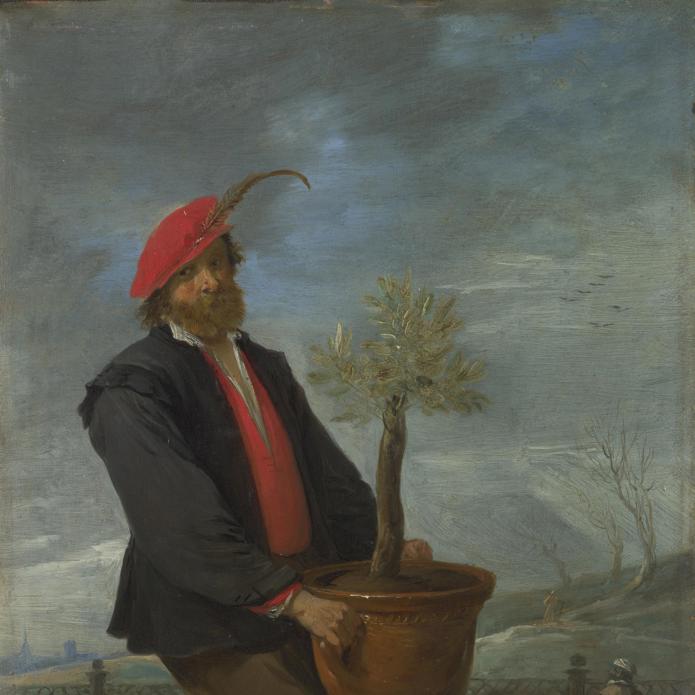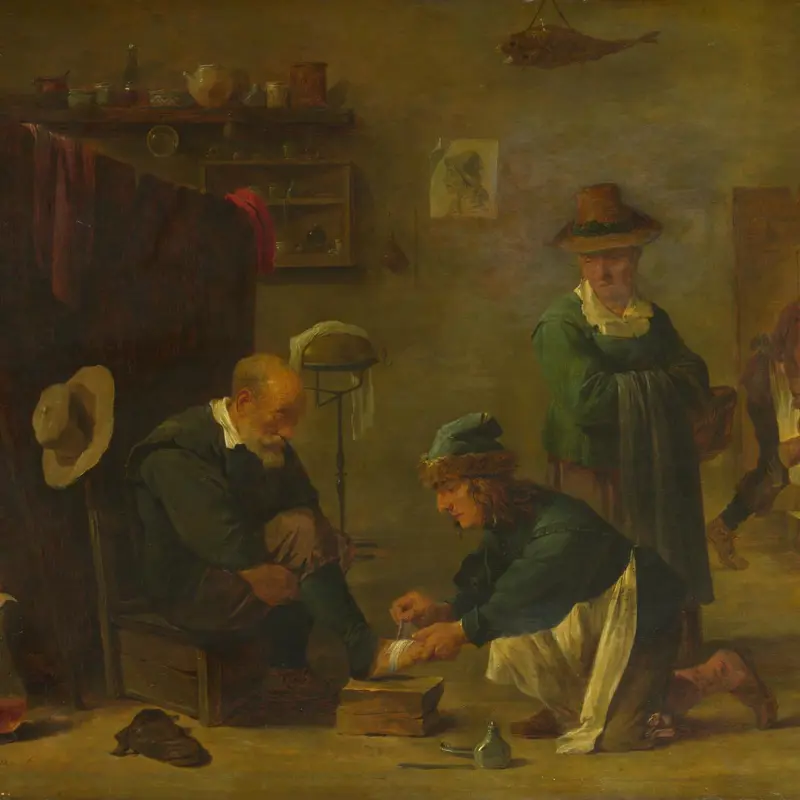David Teniers the Younger, 'Summer', about 1644
About the work
Overview
A young peasant – beardless and red-cheeked, with curly hair and a dreamy look in his eye – represents Summer in the second of Teniers' allegorical paintings of the seasons. Behind him the trees are in full leaf and the distance is hazy with heat; above, the clouds are light and puffy.
The youth stands steadying the sheaf of corn he has just finished binding with plaited straw. He wears a loose open-necked shirt, but his brown breeches and stockings are thick and heavy. Perhaps because of the summer heat and the weight of these garments he’s less active than the characters Teniers portrays as the other three seasons, though the peasants behind him are working hard. The man wields a scythe to cut the corn, while the woman bends to heap it into sheaves, ready to be tied.
Key facts
Details
- Full title
- Summer
- Artist
- David Teniers the Younger
- Artist dates
- 1610 - 1690
- Part of the series
- The Four Seasons
- Date made
- About 1644
- Medium and support
- Oil on copper
- Dimensions
- 21.9 × 16 cm
- Inscription summary
- Signed
- Acquisition credit
- Bought, 1871
- Inventory number
- NG858
- Location
- Not on display
- Collection
- Main Collection
- Previous owners
Provenance
Additional information
Text extracted from the ‘Provenance’ section of the catalogue entry in Gregory Martin, ‘National Gallery Catalogues: The Flemish School: circa 1600–circa 1900’, London 1986; for further information, see the full catalogue entry.
Exhibition history
-
2011Winter Märchen: Winter-Darstellungen in der europäischen Kunst von Breugel bis BeuysKunsthistorisches Museum Wien18 October 2011 - 8 January 2012Kunsthaus Zürich10 February 2012 - 29 April 2012
Bibliography
-
1822British Institution, A Catalogue of Pictures of the Italian, Spanish, Flemish, and Dutch Schools: With which the Proprietors have Favoured the Institution, London 1822
-
1986Martin, Gregory, National Gallery Catalogues: The Flemish School, circa 1600 - circa 1900, London 1986
-
2001
C. Baker and T. Henry, The National Gallery: Complete Illustrated Catalogue, London 2001
About this record
If you know more about this work or have spotted an error, please contact us. Please note that exhibition histories are listed from 2009 onwards. Bibliographies may not be complete; more comprehensive information is available in the National Gallery Library.
Images
About the series: The Four Seasons

Overview
This series of four small paintings is an allegory of the seasons: spring, summer, autumn and winter have been given human forms that embody the essence of each. Spring is a gardener carrying a tree to plant in a formal garden; Summer is a peasant tying up a sheaf of corn; Autumn is a drinker who raises a glass of wine; and Winter is an old man wearing a fur cap and mantle, warming himself near a brazier.
Strongly influenced early in his career by the Dutch artist Adriaen Brouwer, Teniers became the most famous painter of peasant life of his day, rivalling Brouwer’s rowdy, raunchy tavern scenes full of larger-than-life characters.
























